1. Taj Mahal
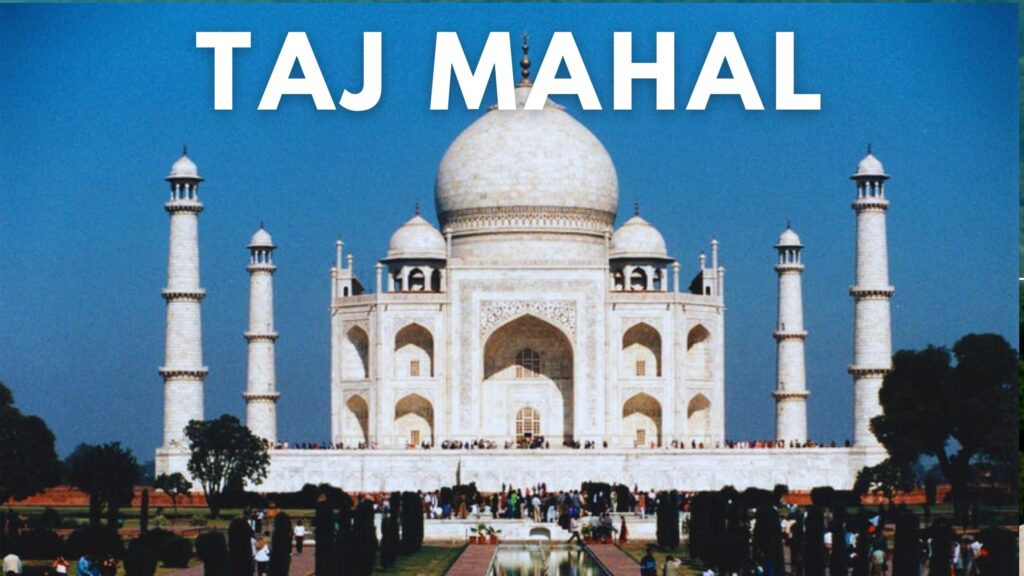
Overview of Taj Mahal
The Taj Mahal, one of the Seven Wonders of the World, is situated in Agra beside the Yamuna River. The Mughal Emperor Shah Jahan constructed it as a monument in honor of Mumtaz Mahal, his third wife. The tomb of Shah Jahan is also located there. One of the most exquisite monuments in the world, the Taj Mahal was built in the 17th century using only white marble. Over a million people visit the beautiful gates each year to see this amazing monument—more people than the entire population of Agra!
The Taj Mahal, a UNESCO World Heritage Site, is known as the Crown of Palaces in Persian. The tomb has a rectangular layout and is accessible by a large doorway with alcoves and an arch on either side. The monument is enhanced by the presence of water channels and fountains at the entry. The Yamuna’s reflection of this magnificent show is so flawless it borders on poetry!
Construction on the Taj Mahal, which occupies an area of around 42 acres, started in 1631 and took 17 years to finish in 1648! White marble from Makrana, Rajasthan, was used in its construction.
2. Agra Fort
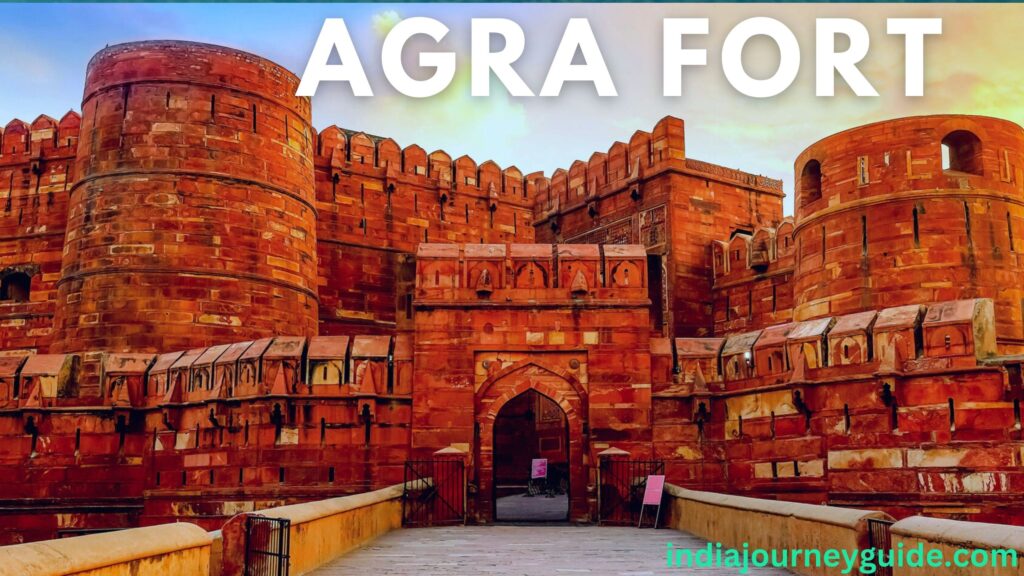
Overview of Agra Fort
The Red Fort of Agra, also known as the Agra Fort, was constructed in 1573 by Emperor Akbar and is a marvel of architecture. It is entirely composed of red sandstone and is situated on the Yamuna River’s right bank. Up until 1638, the medieval fort served as the Mughals’ permanent home. Situated 2.5 kilometers away from the Taj Mahal, it is one of the UNESCO World Heritage Sites.
Agra Fort, sometimes referred to as Lal-Qila, Fort Rouge, or Qila-i-Akbari, is a landmark of Agra and is so large that it is frequently called a walled city. Constructed entirely of red sandstone, it represents the epitome of Mughal art and design. The most magnificent buildings, including the Pearl Mosque, Diwan-i I Khas, Diwan-i I Aam, Moti Masjid, and Jahangiri Mahal, are located within the grounds of Agra Fort. There are areas of the Agra Fort that are off-limits to the public and are used by the Indian Army. The pavilions of the fort offer an astounding view of the Taj Mahal and the Yamuna River.
3. Mehtab Bagh
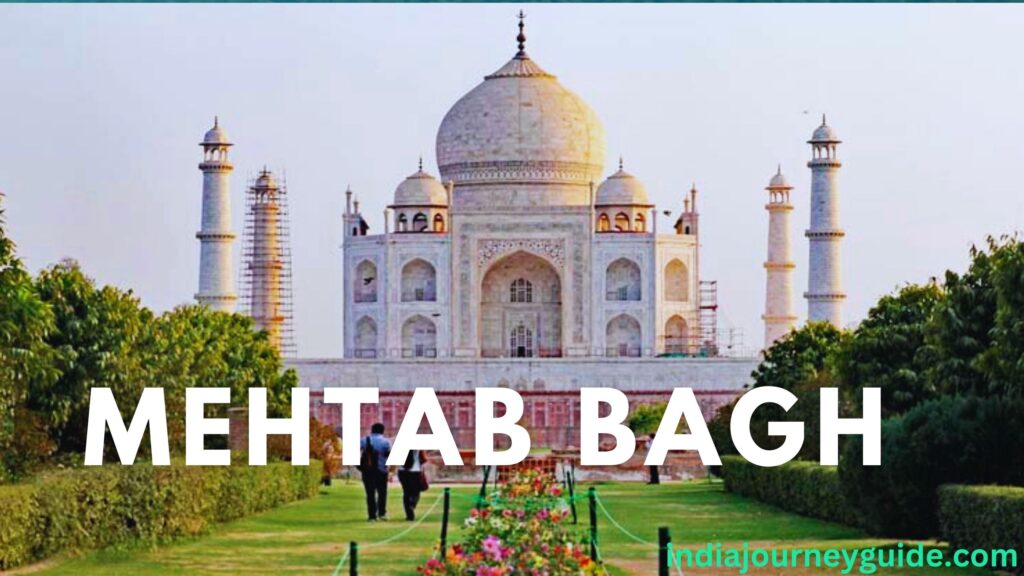
Overview of Mehtab Bagh
One of the last remaining Mughal gardens in Agra is the charbagh garden complex, Mehtab Bagh. It faces the Yamuna River on one side and the Agra Fort on the other and is situated just to the north of the Taj Mahal. Mehtab Bagh offers an exquisite perspective of the Taj Mahal from the fountain in front of the entrance gate, perfectly positioned within the grounds of the Taj Mahal. Photographers and lovers of the outdoors frequent this location for sunsets.
The magnificent Mehtab Bagh features four sandstone towers, one at each corner, with a massive octagonal tank in the middle of each tower. It is thought that Shah Jahan specifically had the bagh built for his hobbies so he could visit and take in the Taj Mahal’s unending magnificence. The magnificent Taj Mahal’s unmistakable reflection in the park’s waterways on moonlit nights is a sight that cannot be described. In addition to the numerous fruit trees that enhance the park’s beauty, Mehtabh Bagh is now a horticultural joy with a plethora of colorfully blossoming flowering plants and medicinal herbs.
4. Itimad-ud-daulah’s Tomb
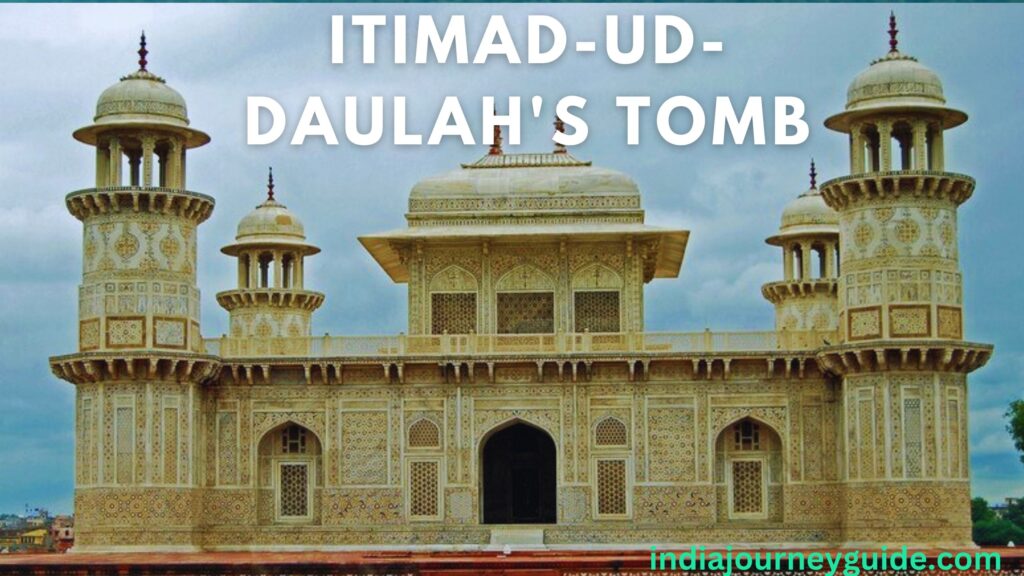
Overview of Itimad-ud-daulah’s Tomb
Itimad-ud-daulah’s tomb is a Mughal mausoleum and is sometimes called the “Baby Taj Mahal” since it is thought to be a replica of the Taj Mahal. This is the country’s first marble-only tomb. For her father Mir Gheyas Beg (after known as Itimad-ud-daulah), a minister in Shah Jahan’s court, Nur Jahan, the wife of Jahangir, commissioned the mausoleum.
The Itimad-ud-daulah tomb signifies the change from the first to the second phase of Mughal architecture. It was also the first building on the Yamuna River’s banks and the first to employ pietra dura. With its octagonal towers and arched doorways, it primarily embodies Indo-Islamic architecture. The Itimad-ud-daulah Tomb appears to be a jewel box set in a garden when viewed from above. Constructed on the banks of the Yamuna, this beautiful mausoleum served as the model for the subsequent construction of the Taj Mahal, one of the world’s wonders.
5. Akbar’s Tomb

Overview of Akbar’s Tomb
Akbar’s Tomb, which occupies 119 acres and is located in Sikandra, on the outskirts of Agra, is the last resting place of the Mughal Emperor Akbar. Constructed during the Mughal dynasty, this significant architectural marvel dates back to 1605–1618. Up to his death, Emperor Akbar personally oversaw the construction of this tomb, which is entirely made of sandstone and white marble. The Tomb of Akbar faces the rising sun rather than the Masjid of Mecca, in contrast to the tombs of other well-known Muslim emperors located all across the world.
Akbar himself created the lovely garden that encircles the main mausoleum. The grave of his spouse, Mariam-uz-Zamani Begam, is situated in Sikandra, approximately one kilometer distant from Akbar’s grave. In accordance with Tartary customs, which dictate that one must see the building of one’s own tomb, Akbar constructed a lovely garden surrounding it while he was alive.
6. Jama Masjid
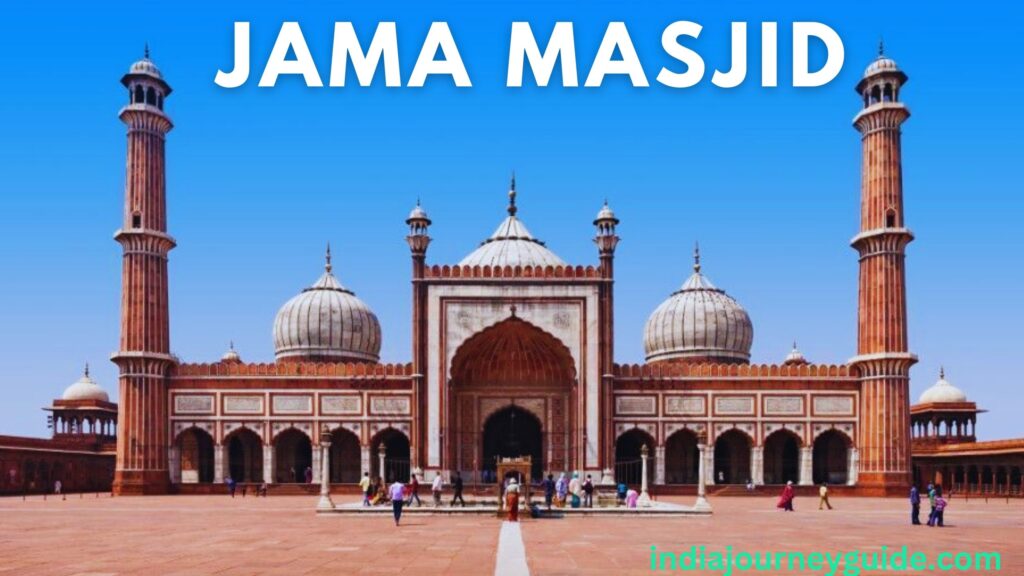
Overview of Jama Masjid
One of the biggest mosques constructed in India by the Mughals is Jama Masjid in Agra, popularly referred to as the “Friday Mosque.” It dates back to the seventeenth century. Built in 1648 during Shah Jahan’s reign, Jama Masjid honors Jahan Ara Begum, his favorite daughter. The magnificent monument can be seen from the Agra Fort, and the Agra Fort Railway station is located directly between the two buildings.
Red sandstone and white marble, which are the primary building materials of the Jama Masjid, are testaments to the amazing Mughal architecture. It is supported by four kiosks in the courtyard and features a fountain in the middle. Persian-style scriptures honoring Shah Jahan and Jahan Ara adorn the inside walls. These inlaid panels bear a striking resemblance to the Taj Mahal and are a feature shared by all the Mughal monuments and buildings in Agra. Thousands of followers gather at this mosque for special prayers held every Friday. The complex of the mosque includes the Tomb of Salim Chisti.
7. Anguri Bagh

Overview of Anguri Bagh
A large garden designed in the pattern of a charbagh (four intricate divisions), Anguri Bagh is located in the center of the Khas Mahal complex in Agra Fort. The Mughal Emperor Shah Jahan constructed it in 1637 as his heavenly retreat. This is a must-see location for an interesting look into Mughal history when visiting Agra Fort.
The garden, officially known as the Garden of Grapes (Anguri Bagh), gained popularity first for its thick grape creepers and for the growing and harvesting of grapes. The magnificent white marble that makes up the surrounding building was first painted, coated in gold, and embellished with exquisitely lovely paintings. The main structure consists of a hall with a recess, rooms arranged in a semicircular arrangement around it, and a large courtyard in front with tanks, fountains, and hammams that face out over Anguri Bagh, a magnificent garden.
8. Dolphin Water Park

Overview of Dolphin Water Park
Dolphin World Water Park, which opened in 2002, occupies 14 acres and has a ton of exciting rides, water slides, roller coasters, and other attractions. In addition, it features a kid’s play area, a locker room, and other amenities. Since then, visitors and city people alike have found much pleasure and fun at Dolphin Water World. The aquatic theme park features distinct swimming pools based on height in addition to a range of attractions and entertaining games for both adults and children.
9. Taj Museum
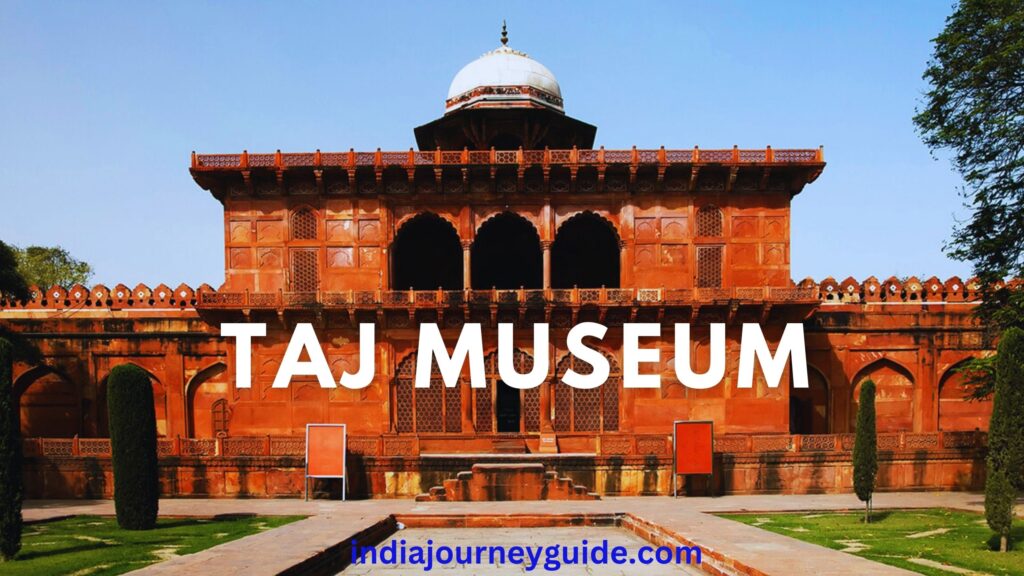
Overview of Taj Museum
The Taj Museum, which is housed inside the Taj Mahal complex, was founded in 1982 on the western edges of the Taj Gardens. The double-story depository is a little yet amazing structure with an exterior quadrangle projection. Located slightly to the left of the mausoleum’s main gate within the Jal Mahal, the museum offers an exceptional chance to examine up close the designs, artwork, and artifacts that went into building the renowned monument. Additionally, it has murals that show how the Emperor and his Emperess planned and built their tombs, with the angles chosen so that the burials’ feet are always facing onlookers.
Telling the story of the Taj is the museum’s main focus, as its name implies. Because it contains information on the great monument’s history and facts, it is a popular destination for tourists. Coins struck in Agra during the period are also available in gold and silver. If you’re looking for a small historical and factual escape, we suggest that you check out the location.
10. Fatehpur Sikri
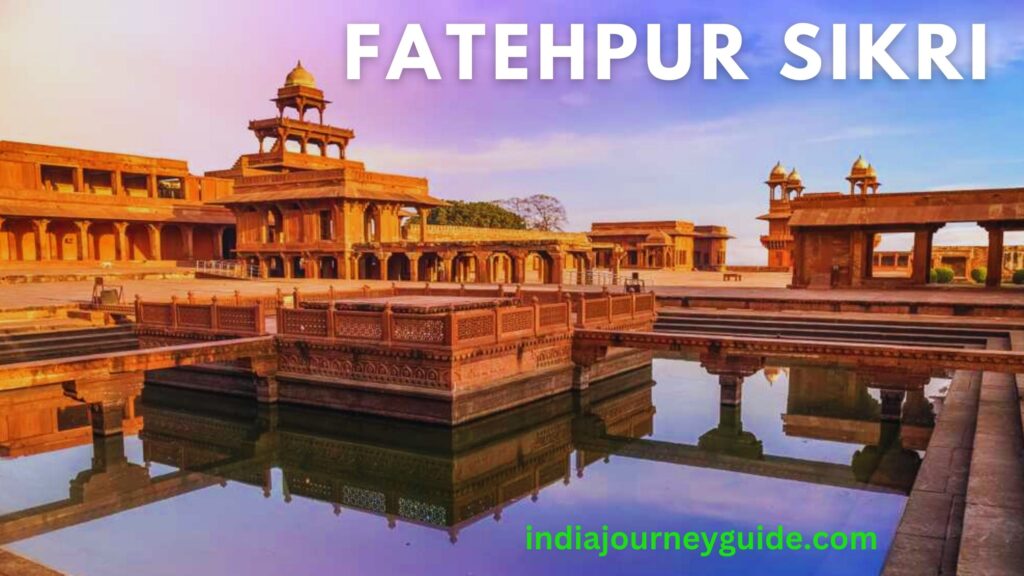
Overview of Fatehpur Sikri
One of the most popular tourist destinations in the Agra district is the town of Fatehpur Sikri, which is 40 km away from Agra. Akbar, the Mughal Emperor, established Fatehpur Sikri in the 1571s. The city is primarily composed of red sandstone. For fifteen years, the city, which the monarch had essentially fortified, served as the center of his empire. Among many other well-known structures, it is home to the Tomb of Salim Chisti, Buland Darwaza, Jama Mosque, and Jodha Bai’s Palace, which is currently a UNESCO World Heritage Site. The Imperial Complex is a collection of pavilions set out in formal geometry on a plot of ground, with its roots in tent encampments found in central and Arab Asia.
Fatehpur Sikri is a rare fusion of religious ideas and superb architecture. Akbar constructed it in remembrance of Sheikh Salim Chisti, who, when visiting the then-city of Sikri, prophesied the birth of a Mughal successor. Akbar constructed this city and the magnificent mosque Jama Masjid, which is still in use today, in remembrance of the prophesy. In addition, he built three palaces—one for a Hindu, one for a Muslim, and one for a Christian—for each of his favorite women. The most brilliant time to see Fatehpur Sikri, an Indo-Islamic masterpiece, is at sunset.
